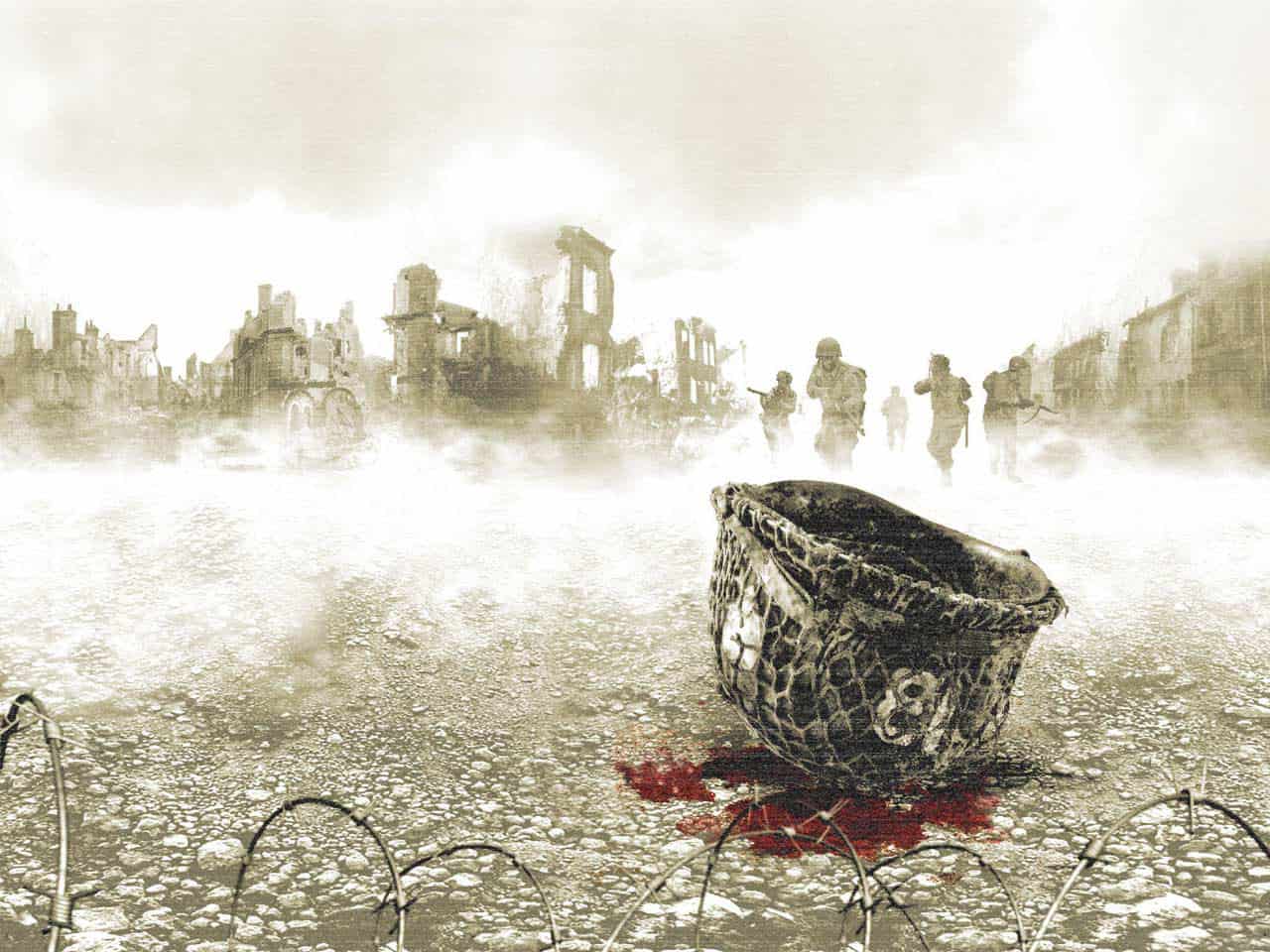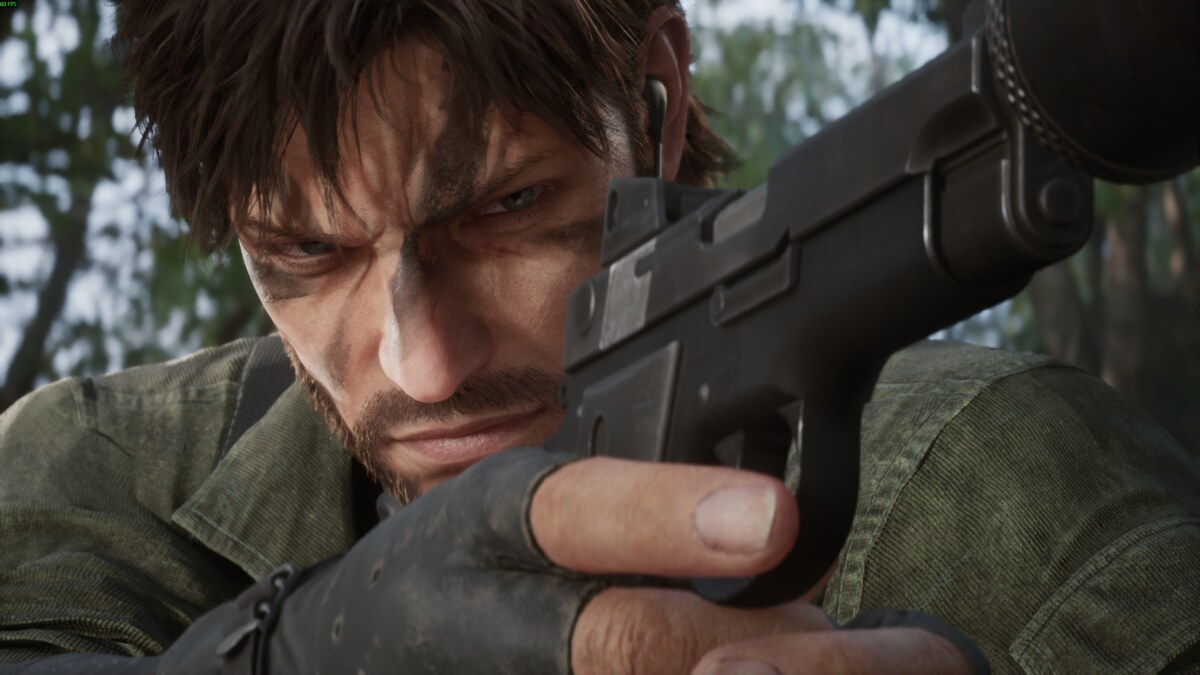You can trust VideoGamer. Our team of gaming experts spend hours testing and reviewing the latest games, to ensure you're reading the most comprehensive guide possible. Rest assured, all imagery and advice is unique and original. Check out how we test and review games here
When it comes to first-person shooters, you can’t beat a good laser gun. I think that’s one of the reasons why I never get on that well with historical shooters, never mind a strategic historical shooter. So, having not experienced the first game in the series, it was with a certain amount of trepidation that I approached Brothers in Arms: Earned in Blood.
There’s a certain quiet confidence that oozes out of BIR:EIB from the moment you first start it up. It’s clear that Gearbox have a very exact vision of what they wanted from the game and have put it together in an extremely slick fashion. Being the second game in a series certainly puts any developer in a stronger position, and it seems Gearbox have a very refined product on their hands. It just feels right. The first thing that strikes you about the game is how effortlessly the strategy elements blend into something that looks exactly like a standard FPS – you’ll be firing out orders in no time.
I’m getting ahead of myself though, so first let’s put things in context. Brothers in Arms: Earned in Blood focuses around Joe ‘Red’ Hartsock (who is played by your good self) and his squad who undertake various missions as part of the paratrooper campaign in Normandy. The story runs in parallel with the original game, and is narrated through flashbacks for the most part, introducing squad mates, superior officers and others. Unlike other games this squad is far from a faceless bunch of cannon fodder. They all have different personalities that shine through in cut scenes and during the game itself. It helps to form a sense of attachment that really stays with you throughout the game. In fact, if anything, it gets stronger.
This feeling of squad attachment is strengthened when you realise how smart the men in your squad are. AI can be frustrating at times, but when you lose a man, you more often find yourself blaming your orders and tactics. It’s all pretty effecting stuff. Indeed, the word authentic is thrown about a lot these days (as much as the debate over whether a pasty games reviewer can truly call a war game authentic), but I’d imagine BIR:EIB would certainly fit the bill. It’s extremely frantic and throwing rushed orders about a battlefield can be panic-inducing. Throw in a few blood effects and some great sound and you have a gaming experience that can truly be described as immersive.
Sadly, certain things can lift you out of this mindset; normally the appearance of gaming staples like health bars popping up for your men as they get wounded. Yes, it’s useful to know the status of your squad, but I would have preferred something a little more elegant. Still, it’s preferable to a more realistic system where your guys would be out of action if they were hit once or twice. The game is tough enough. Indeed, there are other welcome allowances to realism, as the game often offers you the chance to revive fallen comrades at the end of each level, as long as they’re critical to the game – very useful when you’re as rubbish as me. The other major concession is the situational awareness mode. It’s very welcome, allowing you to pause the action for a while, survey the battlefield and plan your tactics. The theory behind it is that the paratroopers had great knowledge of the areas they were dropping into, so knew these places very well. Though in honesty, I don’t care how feasible it is, as it’s damn useful.
The only major problem with BIR:EIB is that for a tactical game, there really is only one main tactic: suppress, and then flank. Certainly, environments and troops mix it up a little, but you’ll play through the vast majority of the game using this tactic. It’s not helped by the fact that certain parts of maps, that are perfect for flanking, become artificially blocked by a low wall or the like, which really is one of my level design bugbears. That’s not to say it isn’t enjoyable, as it really is, but it can seem repetitive at times.
The multiplayer is a nice addition, offering all the single player missions in a cooperative mode. This is something too few games do, usually only offering versus modes, and it’s very welcome here. There are versus modes included here too, of course, and they’re great fun. It’s essentially an exercise in flanking, except that against a human opponent it is considerably more challenging.
I knew the original game was held in high esteem, but this game has snuck up on me as something really rather wonderful. It’s an extremely polished product and pushes all the right buttons if you enjoy FPS or strategy games. If you wanted more of what the original did so well, this is perfect. On the other hand, if you are coming fresh to this game, you’ll find it accessible and fun from the off, while giving you something a little different to the norm. And in this day and age there aren’t many games you can still say that about.
Brothers in Arms: Earned in Blood
- Platform(s): PC, PlayStation 2, Wii, Xbox
- Genre(s): Action, First Person, Shooter
/https://oimg.videogamer.com/images/d289/brothers_in_arms_earned_in_blood_7.jpg)






